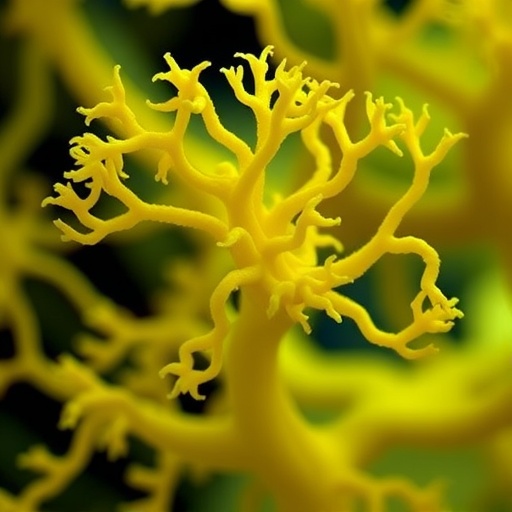
Credit: Kobe University
A research team led by Associate Professor Mitsuharu ENDO and Professor Yasuhiro MINAMI (both from the Department of Physiology and Cell Biology, Graduate School of Medicine, Kobe University) has pinpointed the mechanism underlying astrocyte-mediated restoration of brain tissue after an injury. This could lead to new treatments that encourage regeneration by limiting damage to neurons incurred by reduced blood supply or trauma. The findings were published on October 11 in the online version of GLIA ahead of print release in January 2017.
When the brain is damaged by trauma or ischemia (restriction in blood supply), immune cells such as macrophages and lymphocytes dispose of the damaged neurons with an inflammatory response. However, an excessive inflammatory response can also harm healthy neurons.
Astrocytes are a type of glial cell*, and the most numerous cell within the human cerebral cortex. In addition to their supportive role in providing nutrients to neurons, studies have shown that they have various other functions, including the direct or active regulation of neuronal activities.
It has recently become clear that astrocytes also have an important function in the restoration of injured brain tissue. While astrocytes do not normally proliferate in healthy brains, they start to proliferate and increase their numbers around injured areas and minimize inflammation by surrounding the damaged neurons, other astrocytes, and inflammatory cells that have entered the damaged zone. Until now the mechanism that prompts astrocytes to proliferate in response to injury was unclear.
The research team focused on the fact that the astrocytes which proliferate around injured areas acquire characteristics similar to neural stem cells. The receptor tyrosine kinase Ror2, a cell surface protein, is highly expressed in neural stem cells in the developing brain. Normally the Ror2 gene is "switched off" within adult brains, but these findings showed that when the brain was injured, Ror2 was expressed in a certain population of the astrocytes around the injured area.
Ror2 is an important cell-surface protein that regulates the proliferation of neural stem cells, so the researchers proposed that Ror2 was regulating the proliferation of astrocytes around the injured areas. They tested this using model mice for which the Ror2 gene did not express in astrocytes. In these mice, the number of proliferating astrocytes after injury showed a remarkable decrease, and the density of astrocytes around the injury site was reduced. Using cultured astrocytes, the team analyzed the mechanism for activating the Ror2 gene, and ascertained that basic fibroblast growth factor (bFGF) can "switch on" Ror2 in some astrocytes.
This research showed that in injured brains, the astrocytes that show (high) expression of Ror2 induced by bFGF signal are primarily responsible for starting proliferation. bFGF is produced by different cell types, including neurons and astrocytes in the injury zone that have escaped damage. Among the astrocytes that received these bFGF signals around the injury zone, some express Ror2 and some do not. The fact that proliferating astrocytes after brain injury are reduced during aging raises the possibility that the population of astrocytes that can express Ror2 might decrease during aging, which could cause an increase in senile dementia. Researchers are aiming to clarify the mechanism that creates these different cell populations of astrocytes.
By artificially controlling the proliferation of astrocytes, in the future we can potentially minimize damage caused to neurons by brain injuries and establish a new treatment that encourages regeneration of damaged brain areas.
###
*Glial cell: a catch-all term for non-neuronal cells that belong to the nervous system. They support neurons in various roles.
Media Contact
Eleanor Wyllie
[email protected]
@KobeU_Global
http://www.kobe-u.ac.jp/en/
############
Story Source: Materials provided by Scienmag




